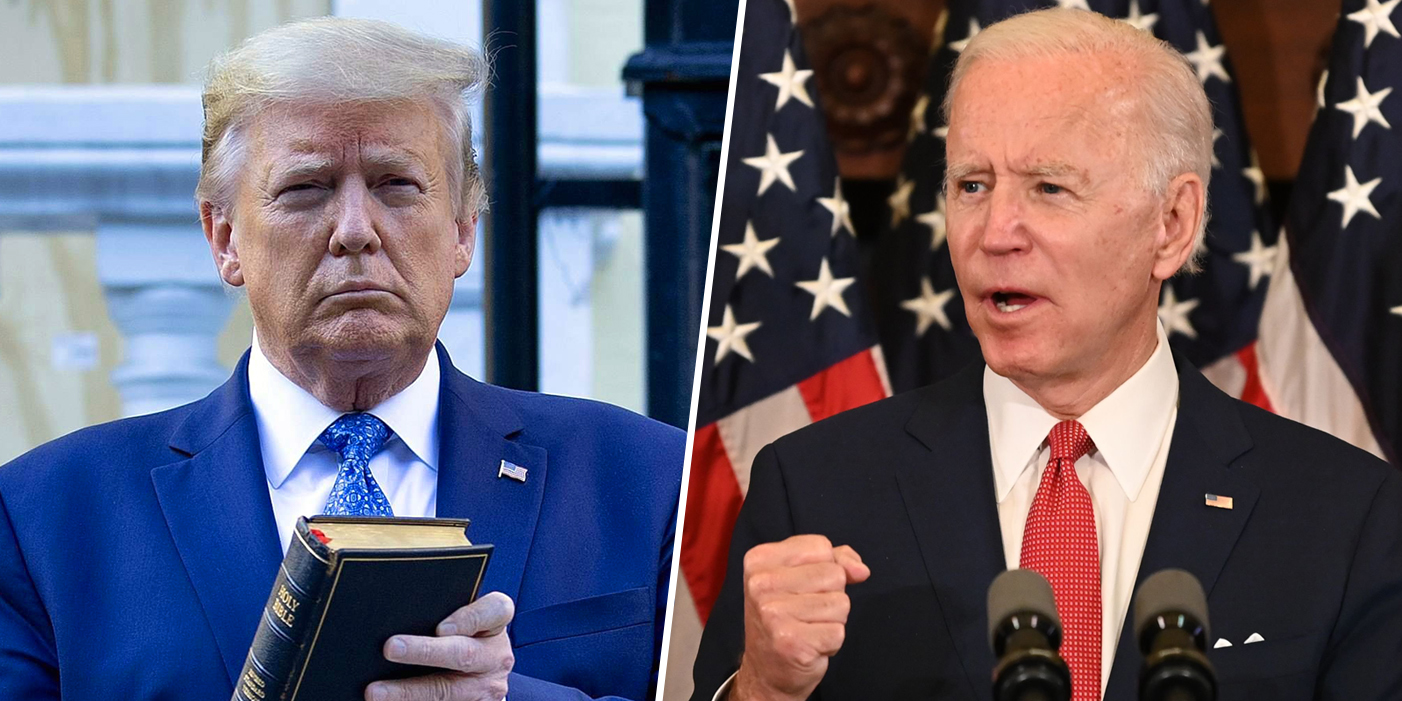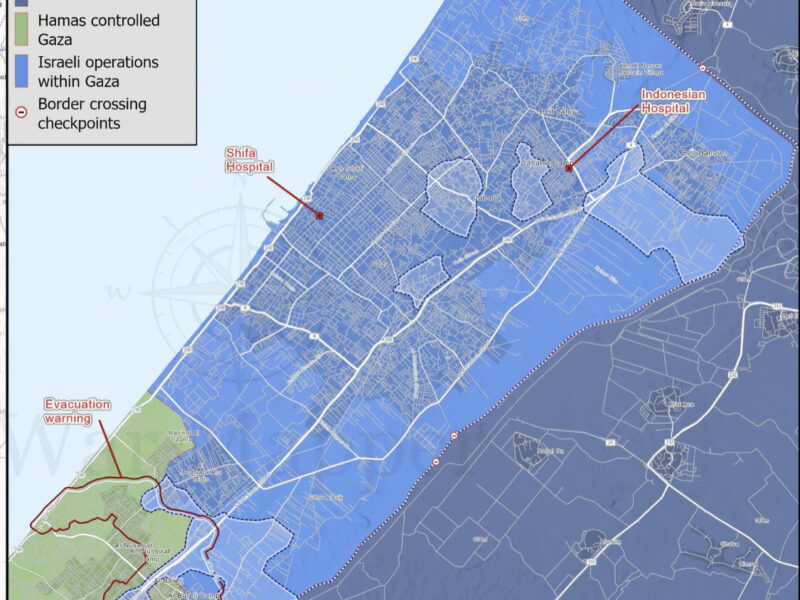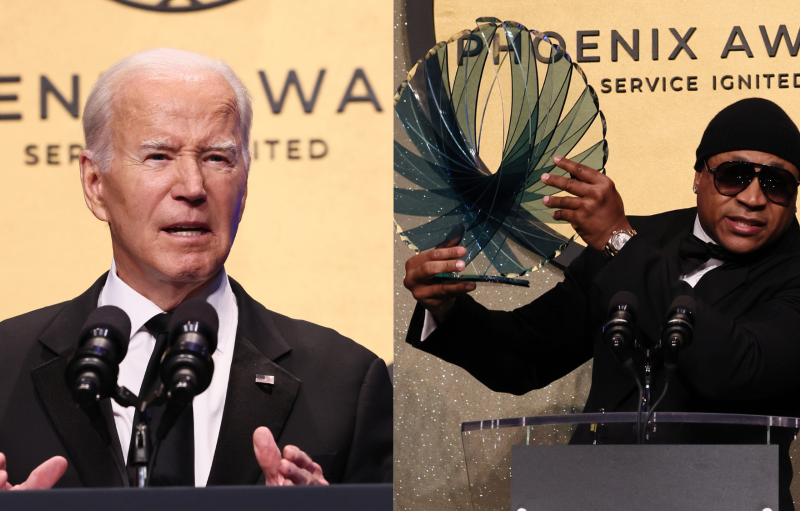2020 Vision: The Final Stretch
With about one month until the election and absentee ballots being sent in even now, this is the final stretch of the 2020 Presidential election. The death of Associate Justice Ruth Bader Ginsburg and the announcement that President Donald Trump and First Lady Melania are infected with the Wuhan Virus, have irrevocably changed the nature of the election. The first debate is on the history books and perhaps one more will be held. Where does the election stand at this time?

Where The Race Stands
The first debate was quite a show. President Trump was respectful until Joe Biden began interrupting him. President Trump would not let up on the former Vice President, pushing him to answer for his son, Hunter’s, scandalous payments from foreign interests. Joe Biden brought up the media lie of Charlottesville and the recent lie about Trump supposedly calling troops losers. Both lies are long discredited. Meanwhile, Joe said he would raise taxes, that no more coal plants would be built, and while he supposedly does not support the Green New Deal (although his campaign website did at the time of the debate) he has a plan to push for more “green” energy. So he told Americans that their taxes are going up, the cost of everything is thus going up, and that he will drastically raise their energy costs. Not a great performance for the night. Chris Wallace seemed to come to Biden’s defense trying to catch the President on climate change and racial issues. The President contended not only Joe Biden but the moderator Chris Wallace as well.
The debate was somewhat anticlimactic. With both sides claiming victory and those who were committed to one side or the other prior to the debate being unmoved. Undecideds seemed to be turned off to both candidates. Surprisingly, a Telemundo Spanish TV poll of their viewers found that 2/3rds thought President Trump had won the debate. This can’t be good news for Joe Biden whose numbers among Latinos have not been good of late, especially in crucial Florida. The matter now seems to rest upon which campaign can best turnout its base to vote in the greatest numbers. Trump voters are very excited to vote for the President. Many opponents of the President are motivated to vote against him, but that does not translate into enthusiasm for the opposition candidates.
The vacancy on the Supreme Court and the effort to fill the seat quickly with Amy Coney Barrett was certainly a surprise. It is no longer clear whether she can be confirmed before the election. This issue will fire up certain demographics on each side for different reasons. The left has used the Supreme Court (SCOTUS) to drive a hard left social agenda. The recently deceased Ruth Bader Ginsburg was a leading force in the initiative to dictate policy on unwilling voters. With a 6-3 majority on the court, Conservative justices can slowly begin pulling the court back from this far left agenda to a more legally neutral or constitutionally constructionist position. To Republicans and Trump supporters, this is a longstanding dream; to Democrats and far left activists it is a nightmare. They know perfectly well that elected officials could never enact the policies the SCOTUS once forced upon the country without facing the wrath of voters. Which side will be more motivated by this event? That remains to be seen, but so far the momentum seems to favor the President and Justice Barrett.
The President’s recent diagnosis will certainly have an impact upon the race as well. Those on the right will pray for his quick recovery while those on the left will chastise him for being “too lax” about virus restrictions. Even as the latter attempt at once to portray the President as the tyrant who shuttered the economy and destroyed millions of jobs. Which is it? Was he too lax or too tyrannical? In fact, the President left it to the governors in each state to enact the shutdowns if they so chose. Perhaps the greatest problem for the President is that a two-week precautionary quarantine for himself and the First Lady will take him away from the campaign trail. The President’s rallies have been a campaign focal point. His supporters, however, have brought the rally to him. Large crowds have set upon Walter Reed Hospital chanting “USA” and other pro-Trump slogans. It is possible voters may see the President as having been too lackadaisical about the virus, but it is more likely that the episode will generate sympathy for him. How will this play into the election? No polls are out since the announcement, but at this late juncture, it may not be entirely clear until the final ballots have been cast.
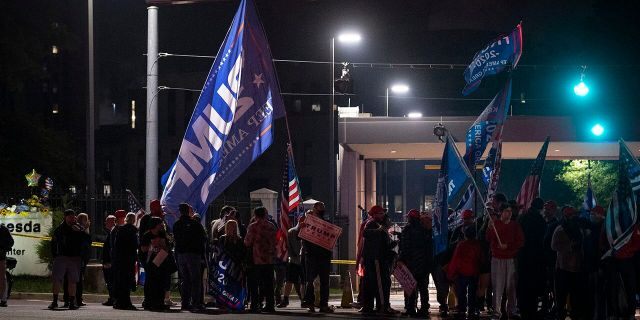
The media is eager to ignore the realm of foreign policy wherein the President has achieved historic successes in the Middle East, deescalated several wars, and has refused to start or intervene in new conflicts. This is also an area of weakness for former Vice President Biden who carries significant baggage from the Obama years.
There are also many tight congressional races afoot that should not go unnoticed. The GOP holds an opportunity to gain seats in the Senate and the House. Whether these gains will be substantial enough to change the House majority remains to be seen.
Polling Caveats
There are many problems with the polls these days. Firstly, we have known for some time that many Trump supporters are shy about telling pollsters for whom they plan to cast their votes. It is also true that many of the models used to determine how many Republicans and Democrats to poll may be out of sync with current numbers. Many pollsters have also been deliberately polling in regions where Republicans might be less supportive of the President and Democrats more enthusiastic to vote against him. A poll is at best a “scientific guess” of results, and pollsters often report their findings in such a way as to influence headlines. A recent poll by Monmouth found that many people expect President Trump to be reelected, even as mainstream media polls continue to portray the election as an easy win for Biden.
The polls shown here are from the Trafalgar Group because their primary business is internal polling, the kind of polling where a campaign desires accurate information. Their methods are thus more sound. These polls will offer some insight, although as we have just seen, many surprises may lay ahead that could influence the outcome.
Recent Polls
As we saw in 2016 national polls are irrelevant, first, in that it is difficult to gauge feeling at the national level, but also because the Electoral College makes this approach foolish. It is not the national popular election results that matter but the results in battleground states. Originally, I had identified six battleground states which included Florida. Recent polls there and a court decision the blocked voting by felons, have placed Florida more safely in the Red column. Recall that in 2018 as the country trended to the left, Florida elected Ron DeSantis as Governor and unseated Incumbent Senator Bill Nelson for former Governor Rick Scott (R-FL). The dual Republican win in a year that went to the Democrats says a great deal about where Florida stands. Five battlegrounds remain relevant: North Carolina, Pennsylvania, Michigan, Wisconsin, and Minnesota. Four of these were narrowly won by President Trump in 2016 and Minnesota narrowly voted for his opponent. Several of them also play host to critical Senate Races where one GOP incumbent Thom Tillis in North Carolina is embattled, and GOP candidates are looking to upset Democrat incumbents in Michigan and Minnesota.
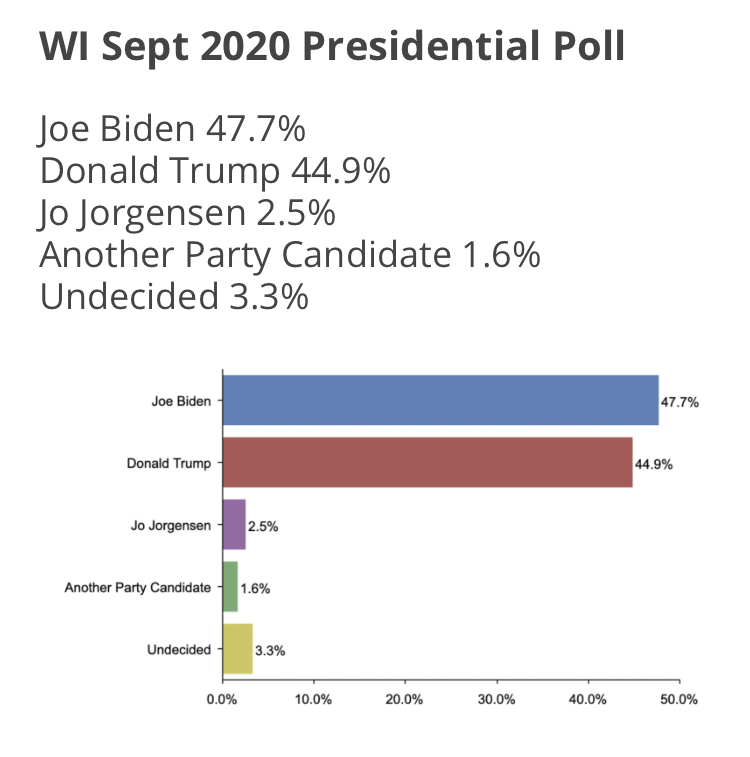
In a poll Trafalgar published on September 28th, prior to the debate and other recent events, former Vice President Biden held a narrow lead in Wisconsin over President Trump 47.7% to 45.9%.
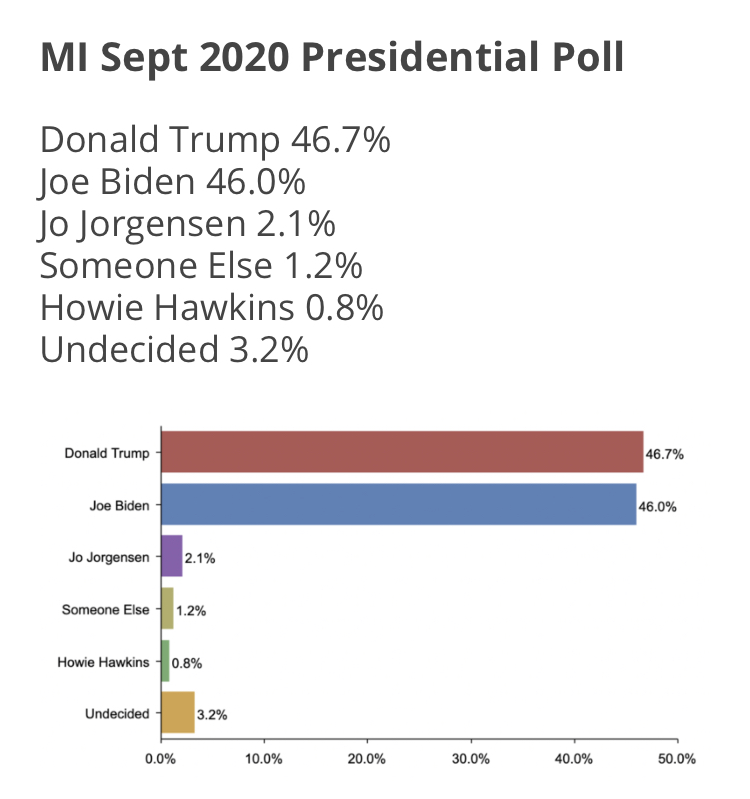
A September 24th poll in Michigan found the President leading narrowly 46.7% to 46%.
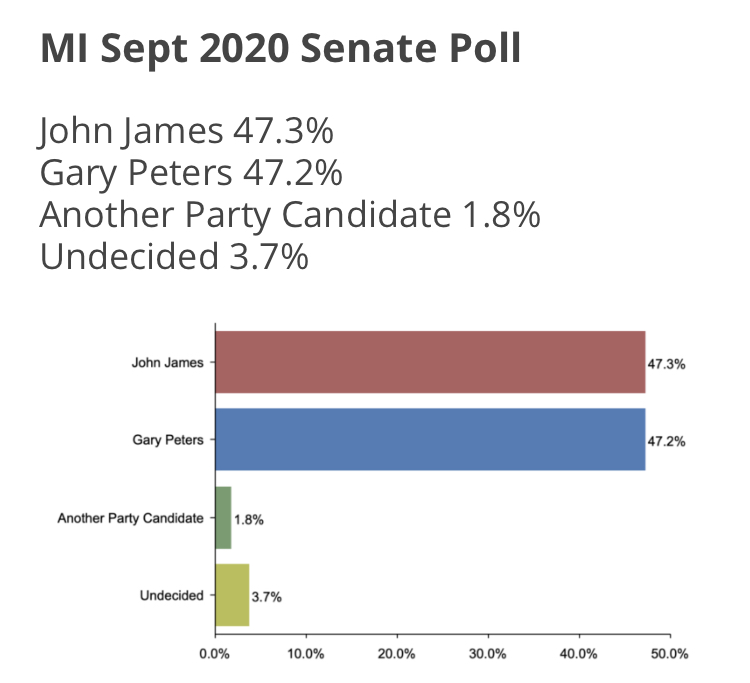
A recent poll of the Senatorial race in Michigan was likewise close with Republican John James, a veteran and African-American businessman, holding a slight lead over incumbent Democrat Gary Peters 47.3% to 47.2%.

A poll conducted in Pennsylvania on September 18th found Joe Biden leading Donald Trump 47.3% to 44.9%.
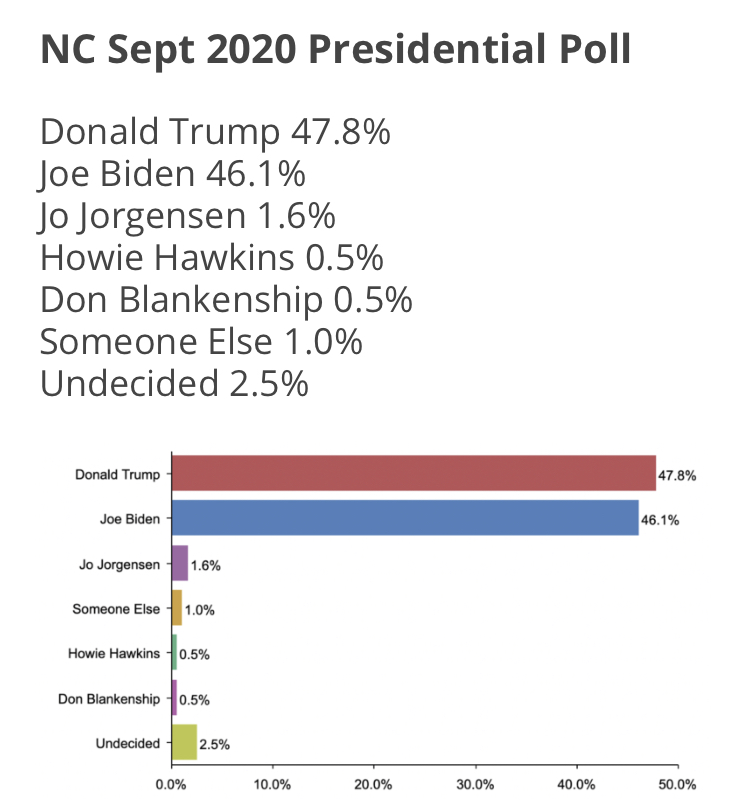
A poll in North Carolina conducted on September 14th had President Trump leading by almost a full point 47.8% to 46.1%.
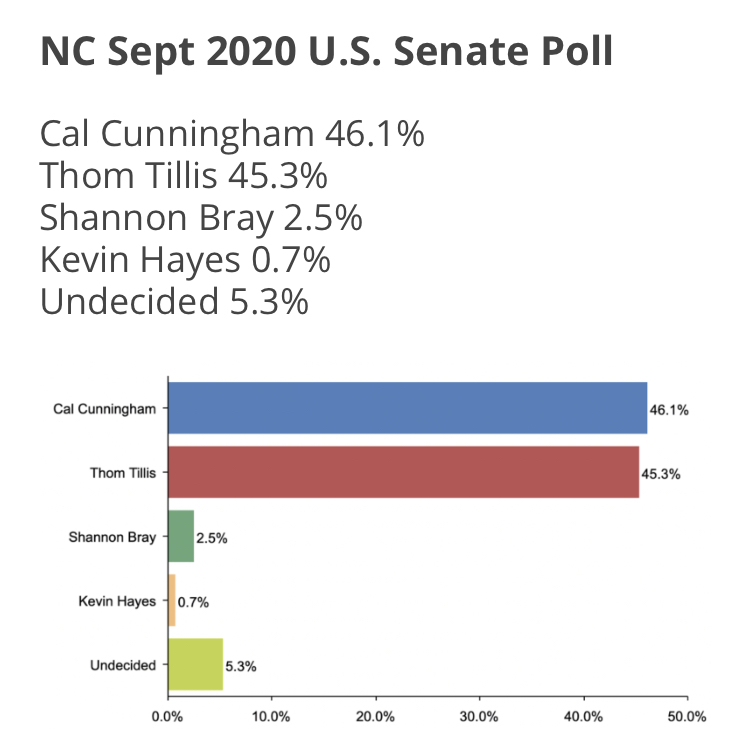
A poll published the same day found the Senate race in North Carolina too close to call as well. Democrat Cal Cunningham held a small lead over Senator Thom Tillis (R-NC) 46.1% to 45.3%. Cal Cunningham’s recent admission to “sexting” with a California strategist may also have some influence on this race.

Finally, to complete the aforementioned point about Florida this poll from September 4th gives the President a lead 48.7% to 45.6%.
Almost all of these polls are within the margin of error, essentially, statistical dead heats.
Anyone’s Election
These polls from September demonstrate that, coming into October, this was anyone’s election. Given the shyness of Trump supporters I am included to believe the President’s support was slightly higher than even these polls suggest, but this is difficult to measure. Three critical factors remain between now and election day: Firstly, how will the public react to the SCOTUS and virus diagnosis. Secondly, what will happen as the election nears and voters not yet decided have to makeup their minds. Finally, which campaign will witness the greater turnout of their primary voting base.
When it comes to the party bases, Trump supporters are as enthusiastic now as ever and are becoming fired up. Will they turn out in numbers that greatly outperform the opposition and its deep pockets? Will Democrats turnout in surprising numbers? As a previous Vision 2020 article noted, it takes a landslide to unseat a sitting President. So far, there is little evidence of a landslide for the former Vice President. If his voting base is truly as enthusiastic as they purport to be, the election thus looks good for President Trump.




